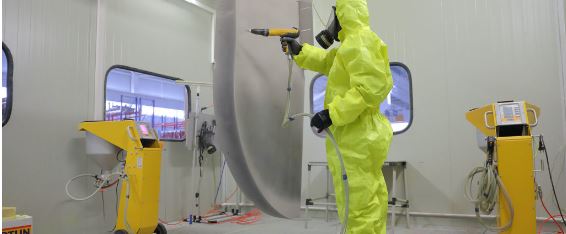In the realm of industrial processes and laboratory settings, the quest for safer, more sustainable chemicals is a persistent endeavor. Among the many substances scrutinized for their environmental impact and potential health hazards, acetone stands out. Often lauded for its versatility as a solvent, acetone has nonetheless raised concerns due to its volatile nature and associated risks. As industries and research institutions seek safer alternatives, the concept of acetone replacement emerges as a focal point in the broader discourse surrounding solvent replacement. This article delves into the motivations behind the drive for acetone alternatives, explores emerging trends in solvent replacement, and discusses the implications for various sectors and the environment.
Understanding Acetone: Properties and Concerns
Acetone, chemically known as propanone, is a colorless, volatile liquid widely used as a solvent in numerous industrial processes, laboratory experiments, and household products. Its ability to dissolve a variety of substances makes it indispensable in applications ranging from paint thinners to nail polish removers. However, its high volatility poses significant challenges.
One of the primary concerns with acetone is its potential to contribute to air pollution. As a volatile organic compound (VOC), acetone readily evaporates into the atmosphere, where it can react with other pollutants to form ground-level ozone, a key component of smog. Moreover, prolonged exposure to acetone vapor can lead to respiratory irritation and other health issues, making its handling a matter of occupational health and safety.
The Drive for Acetone Replacement
The search for acetone replacement is driven by a combination of regulatory pressure, environmental consciousness, and the desire for safer working conditions. Regulatory bodies worldwide have imposed stricter limits on VOC emissions, prompting industries to seek alternatives to traditional solvents like acetone. Additionally, heightened awareness of the environmental impact of chemical substances has spurred research and innovation in the development of greener alternatives.
One promising avenue for acetone replacement lies in the exploration of bio-based solvents derived from renewable sources such as plant oils, sugars, and lignocellulosic biomass. These alternatives offer comparable solvent properties to acetone while boasting lower toxicity and reduced environmental footprint. Furthermore, advancements in green chemistry have led to the synthesis of novel solvent formulations that minimize hazards without compromising performance.
The Rise of Solvent Alternatives
The quest for solvent replacement extends beyond acetone to encompass a wide array of chemical substances used in various industrial and commercial processes. From degreasing operations in manufacturing facilities to pharmaceutical synthesis in research laboratories, solvents play a crucial role in countless applications. However, the traditional reliance on volatile, hazardous solvents has prompted a paradigm shift towards safer, more sustainable alternatives.
Key trends in solvent replacement include:
-
Green Solvents: Derived from renewable resources and characterized by low toxicity and environmental impact, green solvents offer a viable alternative to conventional petroleum-based solvents. Examples include bio-based alcohols, esters, and terpenes, which exhibit excellent solvent properties while minimizing health and environmental risks.
-
Ionic Liquids: Ionic liquids, composed entirely of ions, have gained attention as versatile solvents with tunable properties. Their unique characteristics, such as low volatility and high thermal stability, make them attractive candidates for applications where traditional solvents fall short. Moreover, the design of task-specific ionic liquids allows for customization to suit specific process requirements.
-
Supercritical Fluids: Supercritical fluids, such as carbon dioxide and water above their critical points, exhibit solvent-like properties with distinct advantages. They offer a solvent medium free of residual solvents, making them particularly appealing for applications demanding high purity. Additionally, supercritical fluid extraction techniques minimize environmental impact by eliminating the need for organic solvents altogether.
Implications and Future Directions
The transition towards acetone replacement and the adoption of alternative solvents carry significant implications for industries, regulatory agencies, and environmental stewardship. While the pursuit of safer chemistry aligns with sustainability goals and regulatory compliance, challenges persist in scaling up the production and adoption of alternative solvents on an industrial scale. Moreover, the cost-effectiveness and performance equivalence of alternative solvents compared to their conventional counterparts remain critical factors in driving widespread adoption.
Looking ahead, interdisciplinary collaboration among chemists, engineers, policymakers, and industry stakeholders will be crucial in advancing solvent replacement initiatives. Continued research into novel solvent formulations, process optimization, and technological innovations will further accelerate the transition towards greener, more sustainable practices. By prioritizing safety, environmental responsibility, and innovation, the quest for safer chemistry promises to yield lasting benefits for society and the planet.
Conclusion
In conclusion, the exploration of acetone replacement and the broader movement towards solvent replacement underscore the collective effort to mitigate the environmental and health impacts of chemical substances. From the laboratory bench to industrial production lines, the quest for safer, more sustainable solvents reflects a commitment to responsible stewardship and innovation. By embracing green chemistry principles, leveraging advances in materials science, and fostering collaboration across disciplines, we can pave the way towards a future where chemistry serves as a force for positive change.




